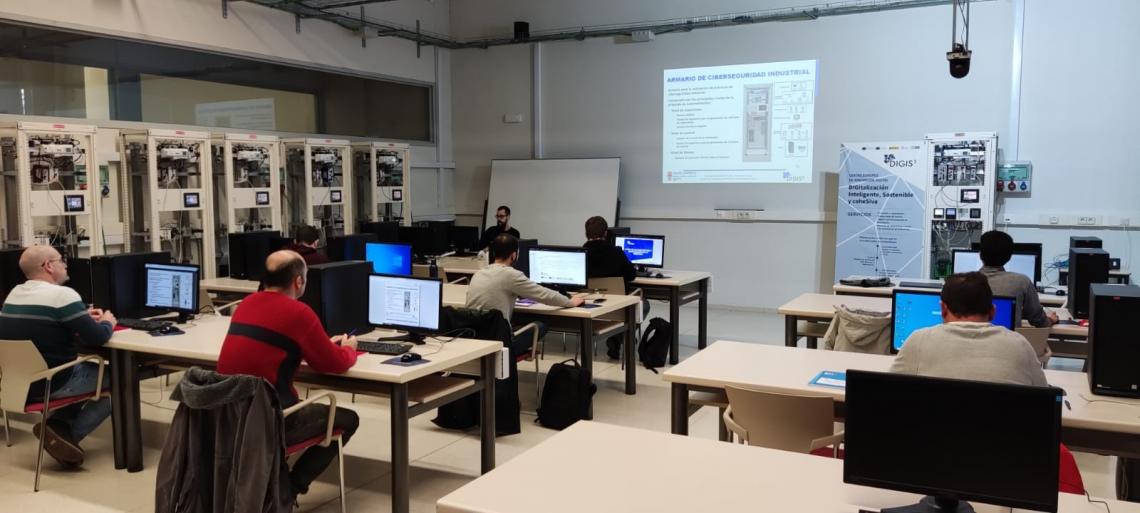The Digital Innovation Hub DIGIS3, to which the University of Leon (ULE) is affiliated, has delivered a course on Industrial Automation and Digitalization. This initiative boasted the participation of prestigious companies and institutions, among them Latem Aluminium, CIUDEN, INCIBE and the Hospital of Leon.

The course offered core training in the latest industrial automation techniques and communication standards. Cloud environments were addressed as well as the industrial internet of things (IIoT) and the use of data through machine learning techniques. The participants explored methods of implementing digital twins, as well as technologies such as virtual and augmented reality. In addition, concepts such as industrial cybersecurity were introduced as a firewall for the protection of systems and sensitive data.
The course took place in the IoT lecture room of the University of Leon, in collaboration with the SUPPRESS Research Group of the Aerospace, Computer and industrial Engineering School. The course adapted an eminently practical approach. The researchers from the group had already delivered a similar course in October, within the framework of DIGIS3. The course revolved around industrial cybersecurity and provided the attendees with the skills and knowledge needed to evaluate system risks form the perspective of cybersecurity. Both courses had been financed by the European Digital Innovation Hubs Network of the European Commission.
DIGIS3 receives financing from European funds and in addition to the University of Leon, it is made up of three Digital Innovation Hubs, which are fully operational in Castilla y Leon: IoT-DIH (AIR Institute), Digital Innovation Hub Industry 4.0 (DIHBU) and Digital Innovation Hub on Livestock, Environment, Agriculture & Forest (DIH-LEAF), as well as the Supercomputing Centre Foundation SCAYLE and the Institute for Business Competitiveness of Castilla y León (ICE). On the part of ULE, 65 researchers from 14 research groups participate in this initiative.